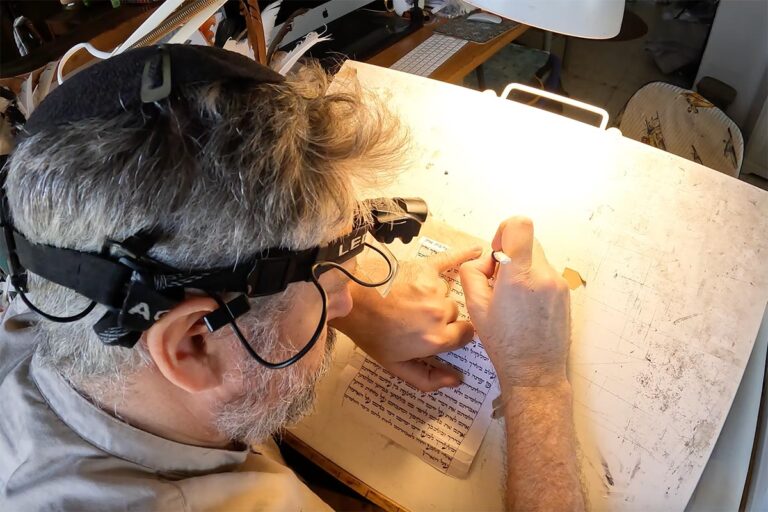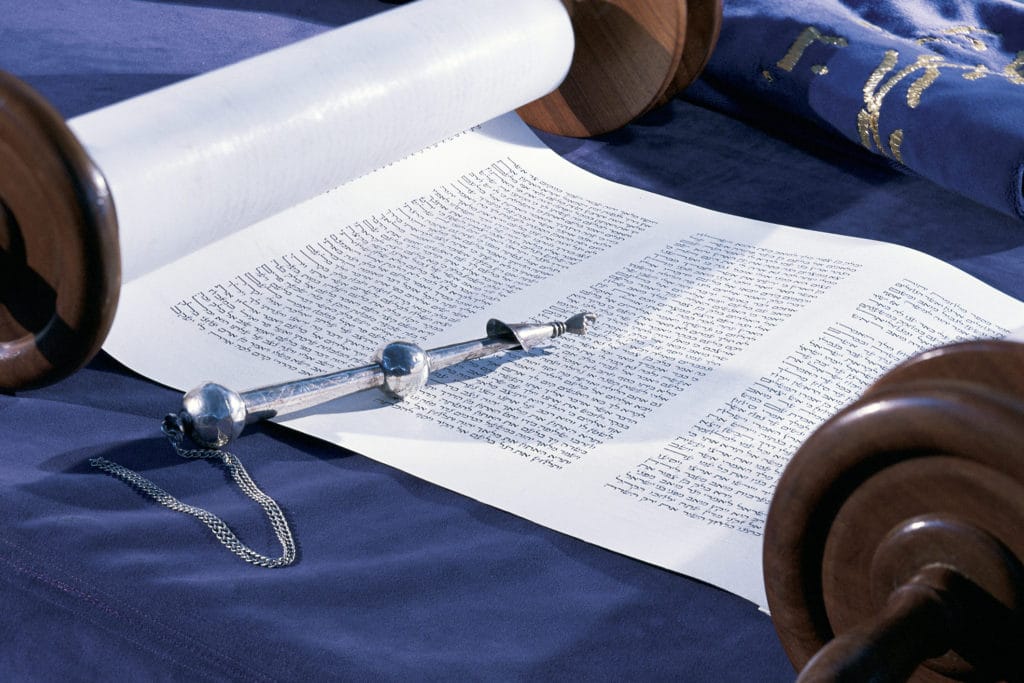
“The majority of the Bible was written just a 40-minute walk away from here and a 20-minute bike ride,” said Jamie Shear. “And doing it here in the same places is chilling.”
Shear is a master scribe living in Jerusalem and has been hand-writing sacred scrolls and Hebrew calligraphy art for more than 20 years. His work uses traditional methods to ensure that each piece is crafted to the highest standards of Jewish law, tradition, and aesthetics.
But Shear’s work isn’t just visually stunning — it’s also steeped in history and tradition. He uses calfskin parchment and a turkey quill to create Hebrew scriptures for Jewish ritual objects such as Torah scrolls, mezuzahs, and tefillin.
His ink is mixed according to an ancient Talmudic recipe, featuring ingredients like ground, cooked oak gallnut which is high in tannic acid and kankantum (iron sulfate), which turns the ink black.

Shear has honed his craft over many years and he’s completed several Torah scrolls (he’s currently working on his 12th) for synagogues in the US, Canada, Israel, and Hong Kong.
Using traditional materials, Shear carefully crafts each letter of the sacred text with a turkey feather – because in the scribal arts, metal nibs are frowned upon due to their association with weaponry.
“The rabbis would frown upon using metal nibs because metal is known for weaponry and Torah is known as a book of peace,” he explained.
But the real magic happens with the parchment scrolls. Made from animal skin in a time-consuming process of hair removal, stretching, and drying, the parchment provides the perfect canvas for the words of the Torah to come alive.
“A sheet with four columns would comfortably take me a week [to complete].”
And it’s not just a matter of writing the letters — every single letter must be written in sequential order. This meticulous process takes Shear a year and a half to two years to complete each Torah.
Shear just isn’t just a scribe — he’s also a teacher. Visitors from around the world flock to Jerusalem to attend his workshops, where he demonstrates and explains his craft. Shear is passionate about sharing the beauty and history of Hebrew calligraphy with others, and he loves seeing people’s reactions to his work.
In addition to creating scribed parchments, Shear also designs decorative marriage contracts (ketubot) and artwork in many styles, including micrography, which involves creating a picture composed of tiny Hebrew letters. He even has an iMac in his studio to help him design his modern artwork.
Originally Published Feb 15, 2023 10:19PM EST
